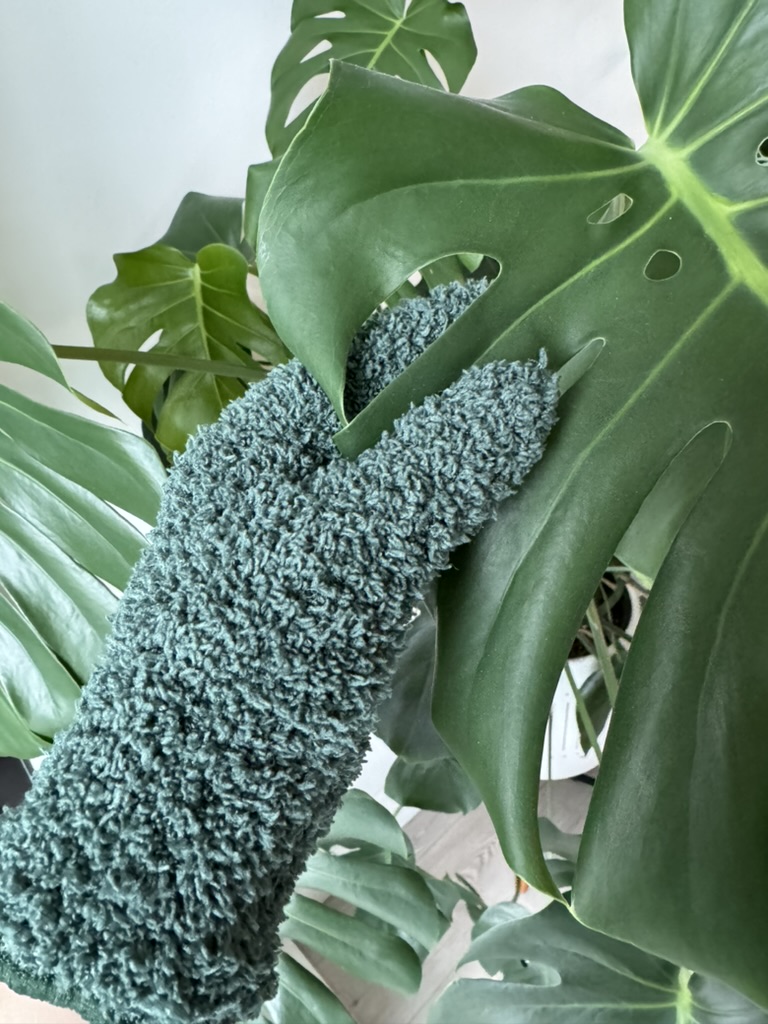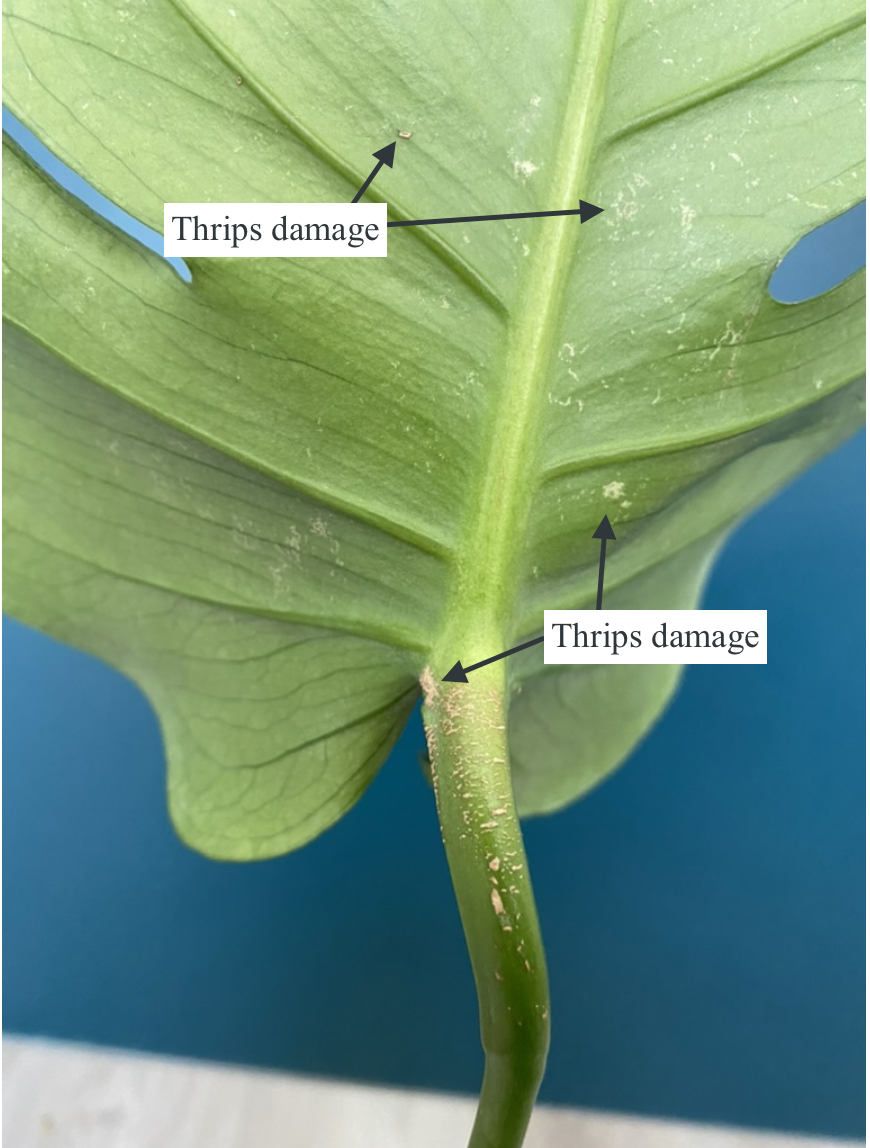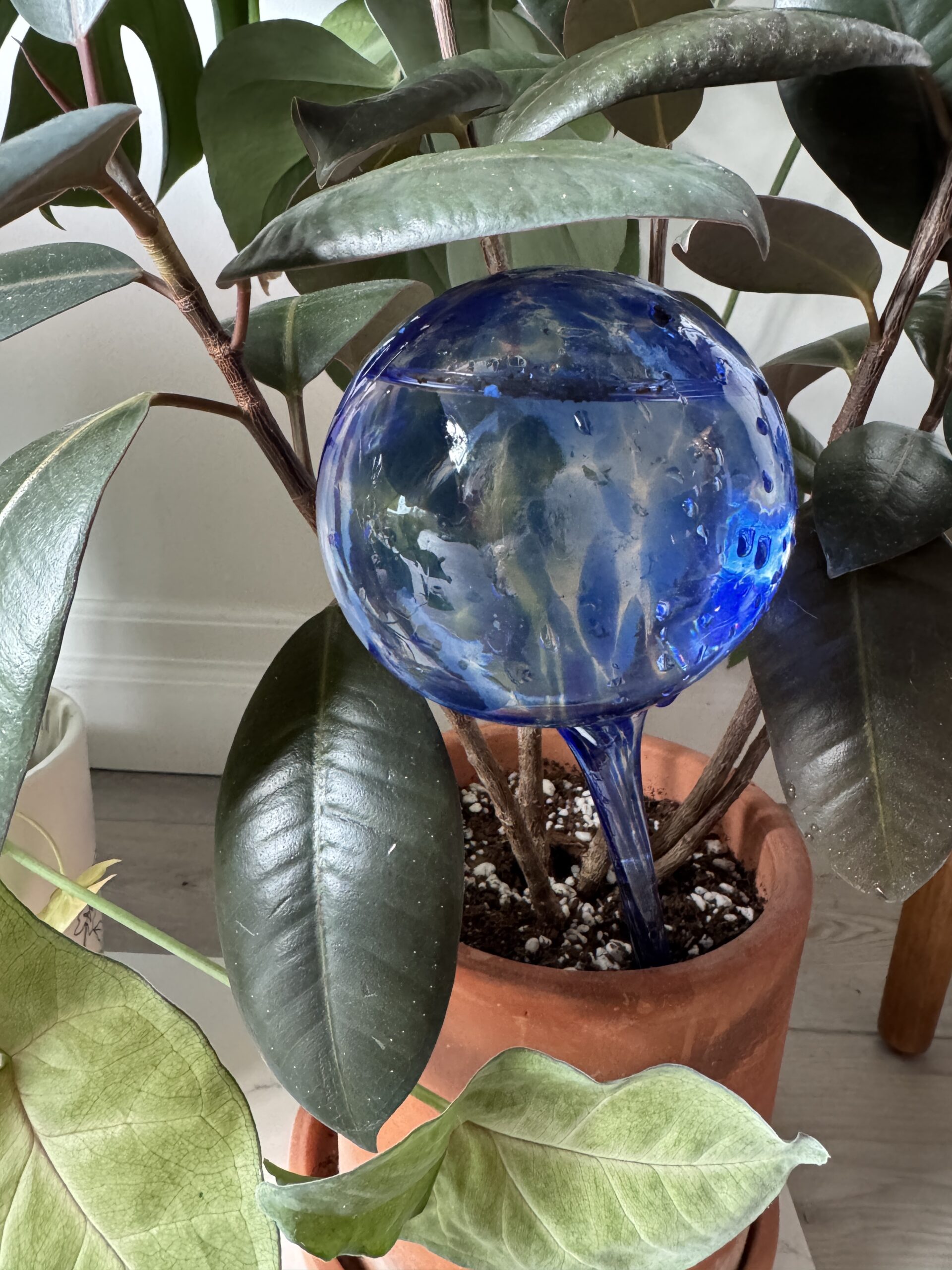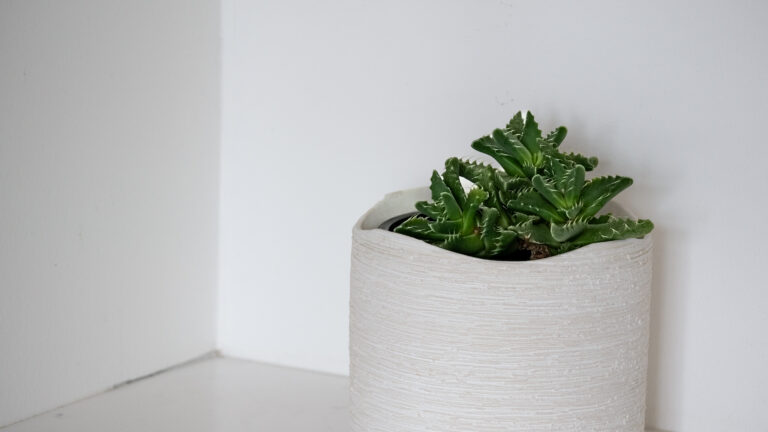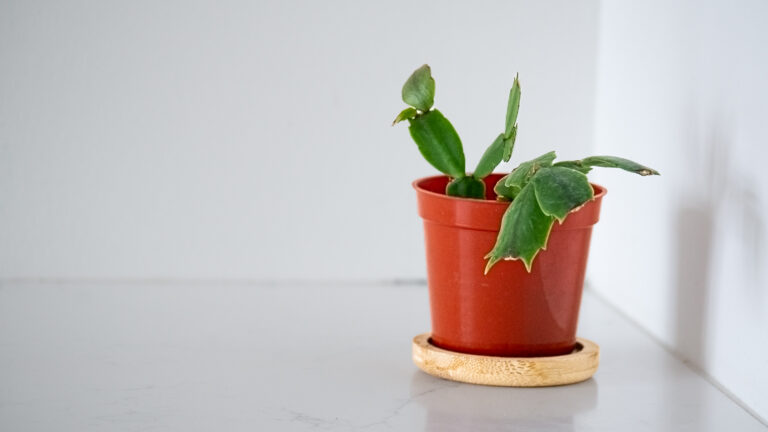Golden Pothos or Epipremnum aureum is a member of the Araceae family. It is native to French Polynesia.
Epipremnum aureum is referred to as the Golden Pothos because of the golden splashes on its leaves.
There are around only 15 accepted species of the Epipremnum genus.
🪴 Appearance of Golden Pothos
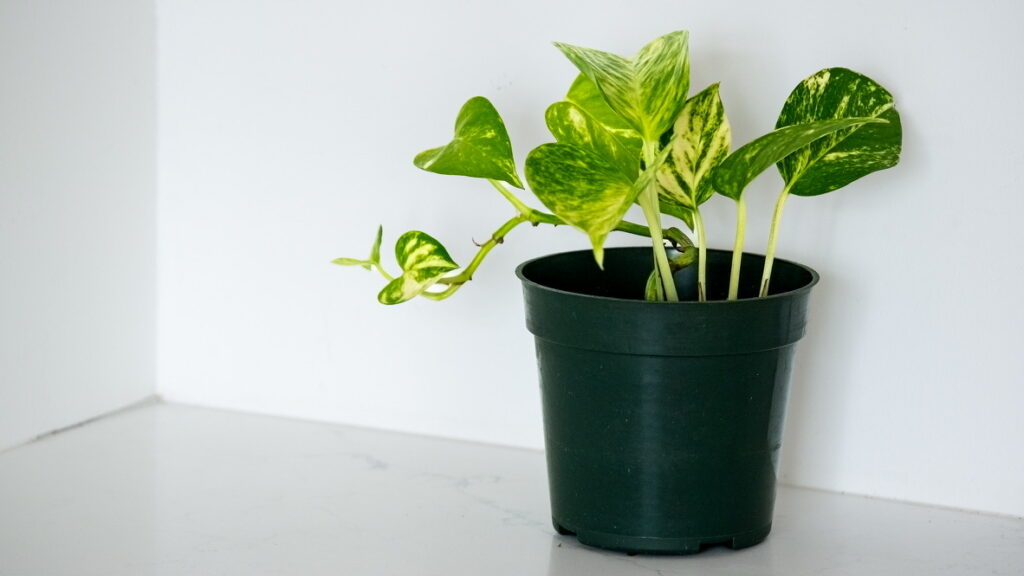
The Golden Pothos is a variegated green pothos, with yellow and whiteish hues speckled across its heart-shaped leaves. Like other pothos, this plant is a vining plant.
☀️ What Light Does Golden Pothos Need?
Golden Pothos thrives in indirect, medium-low light. They can tolerate direct sun only in the morning or evening.
🌡️ What Temperature and Humidity do Golden Pothos Like? 🌫️
Golden Pothos prefers a temperature between 18 to 26 degrees celsius, but can tolerate 15 celsius during the winter.
They are fine with any humidity level, but do well in average household humidity levels (40-60%). I use the Levoit Hybrid Ultrasonic Humidifier (LV600HH) to set my humidity levels in my home.
Since I live in Canada and the winters can be very dry, and the humidity can drop below 30% humidity, so its helpful to set the humidity at about 45% or 50% in this season to keep all of my plants happy.
🌱 How Does the Golden Pothos Grow?
On average, Golden Pothos can grow up to 10 feet long indoors.
New foliage grows from the stem, in a vining pattern. The new leaves unfurl as they mature. New leaves are brighter green and eventually darken as they mature.
🌸 Does the Golden Pothos Bloom?
The Golden Pothos rarely produces flowers indoors. If the plant does bloom, the flowers are small.
✂️ How to Propagate Golden Pothos
The easiest way to start a new Golden Pothos is by stem cuttings.
- Stem Cuttings: Choose a leaf from a healthy adult Pothos. Make sure the cutting has at least one node or this method won’t work. Cut the plant along the vine about an inch or two from the node. Then you can either water propagate or soil propagate. My preference is water propagation.
- Water propagation: Take a cutting from a healthy Pothos and place it in water. If the water starts to get murky, you will want to change out the water and put the plant back in. Otherwise it will potentially rot the stem and the plant won’t root. I like water propagation because I can see when the roots start to form in a clear glass container (like in the video above). When the roots are stable enough, I then plant it in soil.
- Soil propagation: With soil propagation, you can take a cutting and put it directly in soil. You won’t be able to see if the plant is rooting in the soil, but if the plant eventually dies, you know it didn’t root successfully. With soil propagation, you don’t have to worry about transplant shock when you plant your Pothos from water to soil.
Patience is key with propagation. Give your new Pothos time to settle into its environment. Once you see new growth, you know your plant is well established.
💧How Much Water Does the Golden Pothos Need?
The Golden Pothos likes to mostly dry out between waterings. To determine if your plant needs water, you can stick your finger in the soil (1 to 2 inches) and if it is dry, its ready for water! If you don’t want to get your hands dirty, you can try a moisture meter.
Pothos typically need to be watered every week or every other week (depending on your environment).
I typically bottom water my Golden Pothos through the drainage hole of the pot on a tray. It’s the easiest way to know if your plant is thirsty or not. Overwatering can lead to fungus gnats, root rot, or the death of your plant.
You can top water, but it’s best to do so in a pot with drainage until water is flowing out of the hole. If your pot doesn’t have drainage, you might accidentally drown your plant or make some fungus gnats very happy.
You should top water from time to time to make sure any built up minerals can wash through the plant. The water should drip out of the bottom of your drainage hole.
🪳 Pests & Problems 😔
Golden Pothos can face the following pests and problems.
🪳 Pests
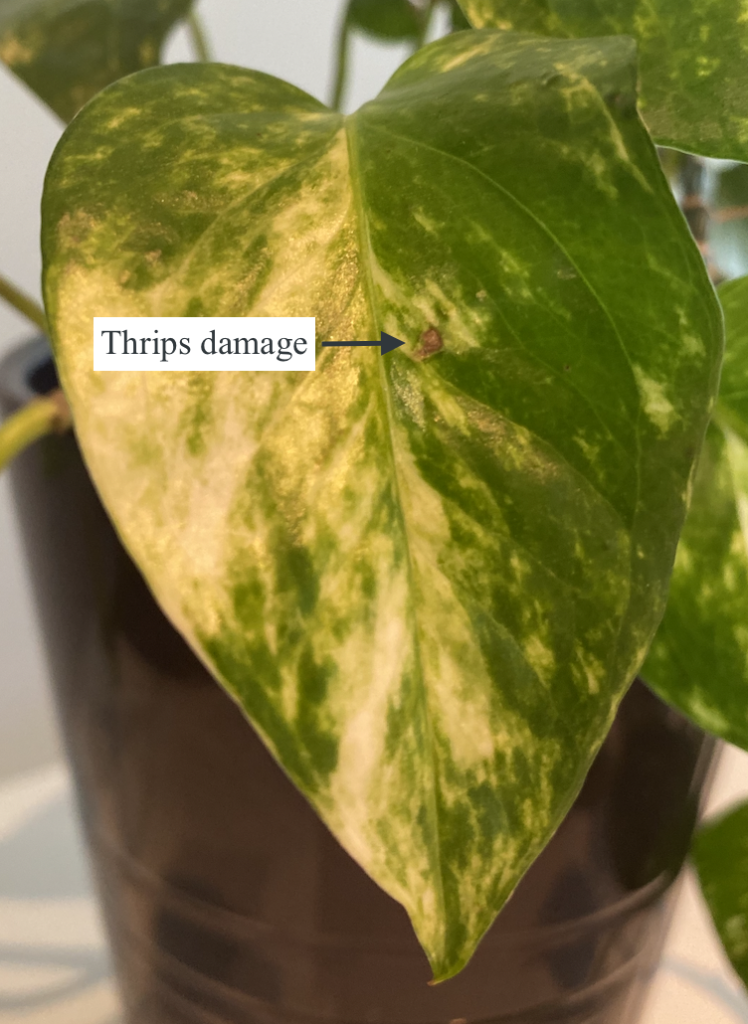
- Mealy Bugs: These look like little white cotton balls on the Pothos. You can remove these with your fingers if you catch them early enough, but I would use a cotton swab with a drop of Isopropyl alcohol and try to scrape them off the stem.
- Spider Mites: If spider mites have taken to your Pothos, spray them with a mixture of neem oil, dish soap and water (or you can buy an insecticidal soap). I repeat this about once or twice a week (depending on the severity of infestation) for about a month. It’s also good to do this preventatively once a month or so. You will know you have spider mites if you see webbing and leaf damage. Learn how to eradicate Spider Mites.
- Thrips: These are little, dark bugs that look like dirt. They suck the life out of the leaves, and lay eggs within the tissue of the leaf. As they age, they can grow wings and infect other plants. I spray the plant with a mixture of neem oil, dish soap and water. I repeat this every few days to try and get both the pest and the eggs. Sometimes I just chop the affected leaf since they are hard to eradicate. Complete guide on how to get rid of thrips. I have experienced thrips with the Pothos and it was brutal.
- Fungus gnats: Spray the plant with a mixture of neem oil, dish soap and water. I also let the soil dry out and add dryer sheets on top of the soil so the gnats can’t sense the moisture on the soil.
😔 Other Common Problems
- Yellowing Leaves: If you have a new leaf coming in, your Pothos is likely fine. Plants pull energy from older leaves to support new growth. But it can also indicate over- or under- watering or lighting issues.
- Pale/Bleached Leaves: If the Pothos has too much sun, the leaves may appear pale or bleached.
- Overwatering: Root rot happens from overwatering your Pothos with insufficient drainage. You can improve the drainage of your plant by ensuring your Pothos is potted in a planter with a drainage hole and using a well draining soil (something with a decent amount of perlite). You can also end up with fungus gnats or fungal disease from overwatering.
- Underwatering: Even though plants prefer to be underwatered over overwatered, you still have to remember to water it on a consistent schedule. Signs of underwatering an include leaves becoming shrivelled, discoloured or dry.
- Cold temperatures: Damage from cold temperatures can lead to disease, visible discolouration, growth stagnation or death. You can prevent this by making sure your Pothos is not exposed to environments below the recommended temperatures.
- Etiolated: Being etiolated (or leggy) happens if your Pothos doesn’t get enough sun. The stems will grow really long between the leaves on the vine trying to spread out for more sun.
☢️ Are Golden Pothos Toxic?
Golden Pothos is toxic to humans and pets if ingested.
Golden Pothos Quick Care Guide
| Scientific Name | Epipremnum aureum |
| Nickname | Golden Pothos |
| Origins | French Polynesia |
| Light | Indirect, medium-light |
| Temperature | 18-26 degrees celsius (preferred), 15 degrees celsius can be tolerate during the winter |
| Humidity | Any |
| Height | Up to 10 feet long (indoors) |
| Blooms | Rarely indoors |
| Propagate | Stem cuttings, Water Propagation, Soil Propagation |
| Water Frequency | When mostly dry (likely once a week or every other week) |
| Pests | Mealy Bugs, Spider Mites, Thrips, Fungus Gnats |
| Common Problems | Overwatering (root rot), underwatering, discoloured leaves |
| Toxicity | Toxic |
References
Below is a list of external sources I consulted while writing this post. This post is a mixture of my own experiences, and the external sources listed below:
Jomo Studio – Pothos Golden
Wisconsin Horticulture
The Sill
Jomo Studio – How to Take Care of Pothos

